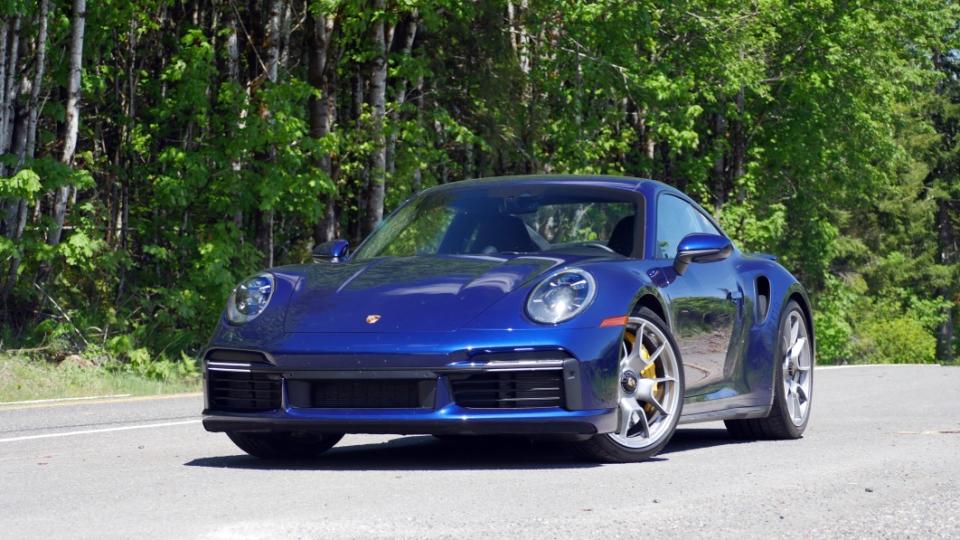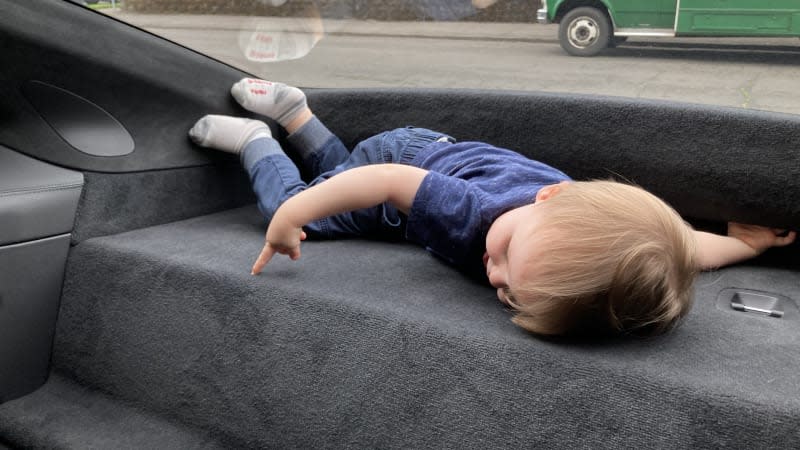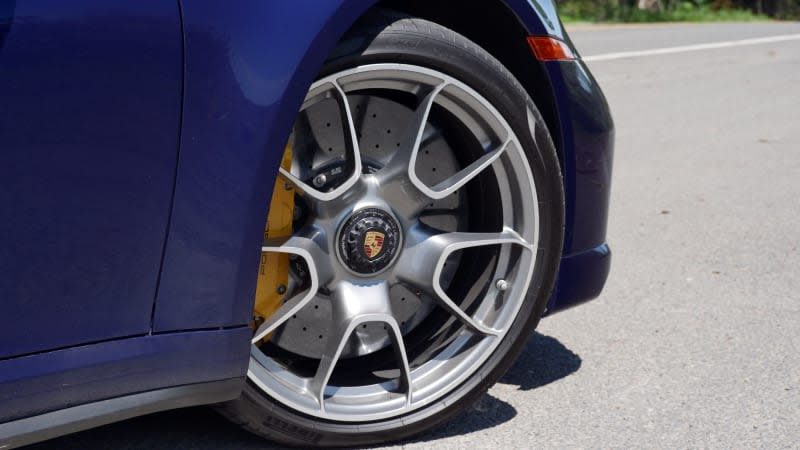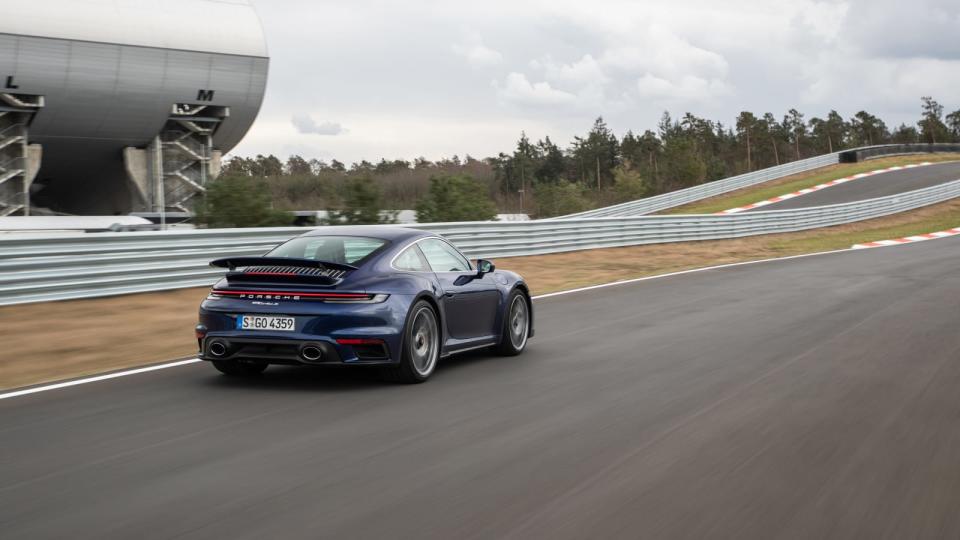Porsche 911 Turbo S Road Test | Cleaving off razor-thin slices of 911 pie

You’ll be forgiven for having a hard time keeping track of all the various versions of the Porsche 911. Telling them apart invariably requires reading what’s written below “Porsche” on the back (unless the owner has deleted it) or possessing nerd-level knowledge of Stuttgart’s finest. Expand the subject into the historical realm and your head will be left spinning as a never-ending parade of three-digit internal codes fill the discussion. Indeed, being a Porschephile is all about nuance, of precisely selecting the ideal, thinly sliced piece of rear-engined pie for your very specific tastes, needs and maybe budget (but probably not).
It is with that preamble that I introduce you to this Porsche 911 Turbo S Coupe with the Lightweight Package. The last bit is actually important, as it’s not like some package that adds heated seats and a Bose stereo. Nope, this $10,340 line item fundamentally changes the nature of the car. Basically, the thin 911 slice that is the new Turbo S Coupe gets Ginsued even more.
Sound deadening is removed along with the back seats. Lightweight full bucket seats that power-adjust for height, manual-adjust fore and aft, and don’t recline at all, are included along with lightweight noise-insulated glass. Two Turbo S options also join the tally: the adaptive PASM Sport Suspension that lowers the car an extra 10 mm and the Sport Exhaust system finished in silver. In total, you save 66 pounds.
Yeah, that doesn’t seem like a lot, does it? And you really have to ask yourself whether those savings (and, you know, the 10 large) is worth all the extra noise. Because it is loud in this 911, with booming road noise far beyond what was already a pretty loud car. Perhaps it better allows you to hear that turbo flat-six wail and rattle, and that Sport Exhaust to sing its soulful tune, but again, not to an extent that would make all that tire roar worth it when cruising on the highway. And should you prefer to not drive bolt upright, those fixed-back buckets might get old. They certainly don’t encourage graceful ingress and egress.


Back seat delete means the back of the 911 Coupe becomes a fun jungle gym in the driveway. This car also had the Turbo S-exclusive 20/21-inch wheels.
Of course, 66 pounds can make a difference on a track where back seats and sound deadening don’t mean a lick. This can therefore be considered the track configuration for the 911 Turbo S, which would otherwise be the fastest, most capable road-intended 911. Thing is, doesn’t the 911 GT3 exist for those with weekend motorsports aspirations? It too has the lowered ride, lighter weight and deleted back seats, yet goes even further with a unique double-wishbone front suspension design and ball joints in place of rubber suspension connections for superior agility and feedback. Besides excelling at a track, it’s a helluva weapon to attack tight, twisting mountain roads.
For $26,000 more, this 911 Turbo S with the Lightweight Package counters the GT3’s extra suspension wizardry and lightweighting with pure, unadulterated muscle. It’s laughably fast, with a 3.7-liter turbocharged flat-six good for 640 horsepower and 590 pound-feet of torque. That’s 60 more horses and 37 more torques than the outgoing generation (aka the 991.2, by the way), and thanks to the dauntless grip of all-wheel drive and the super-human shifting of the PDK gearbox, it blitzes from 0 to 60 mph in 2.6 seconds in the Coupe (0.2 quicker than before). Go ahead and let that amount of time sink in. Better yet, time yourself saying that last sentence out loud. It should take about 2.6 seconds.
The GT3 does the same sprint in 3.2 seconds, but also goes about its acceleration very differently due to its naturally aspirated 4.0-liter flat-six that produces 502 horsepower at a soaring 8,400 rpm. It makes noises that’ll melt your knees and even allow you to control it with a six-speed manual should you really want the feels. And for the purposes of this track conversation, being free of a turbocharger theoretically yields more immediate throttle response. Yet, you’ll also be doing without 244 pound-feet of torque, which is more than many cars possess in total. In short, in a straight line, the Turbo S will smoke a GT3.

So, if your go-to track has longer, faster sweepers and extended straightaways to let’er rip, the Turbo S is the way to go. A tighter, technical circuit? GT3, be it the standard version or wing-less GT3 Touring.

 Yahoo Autos
Yahoo Autos 
